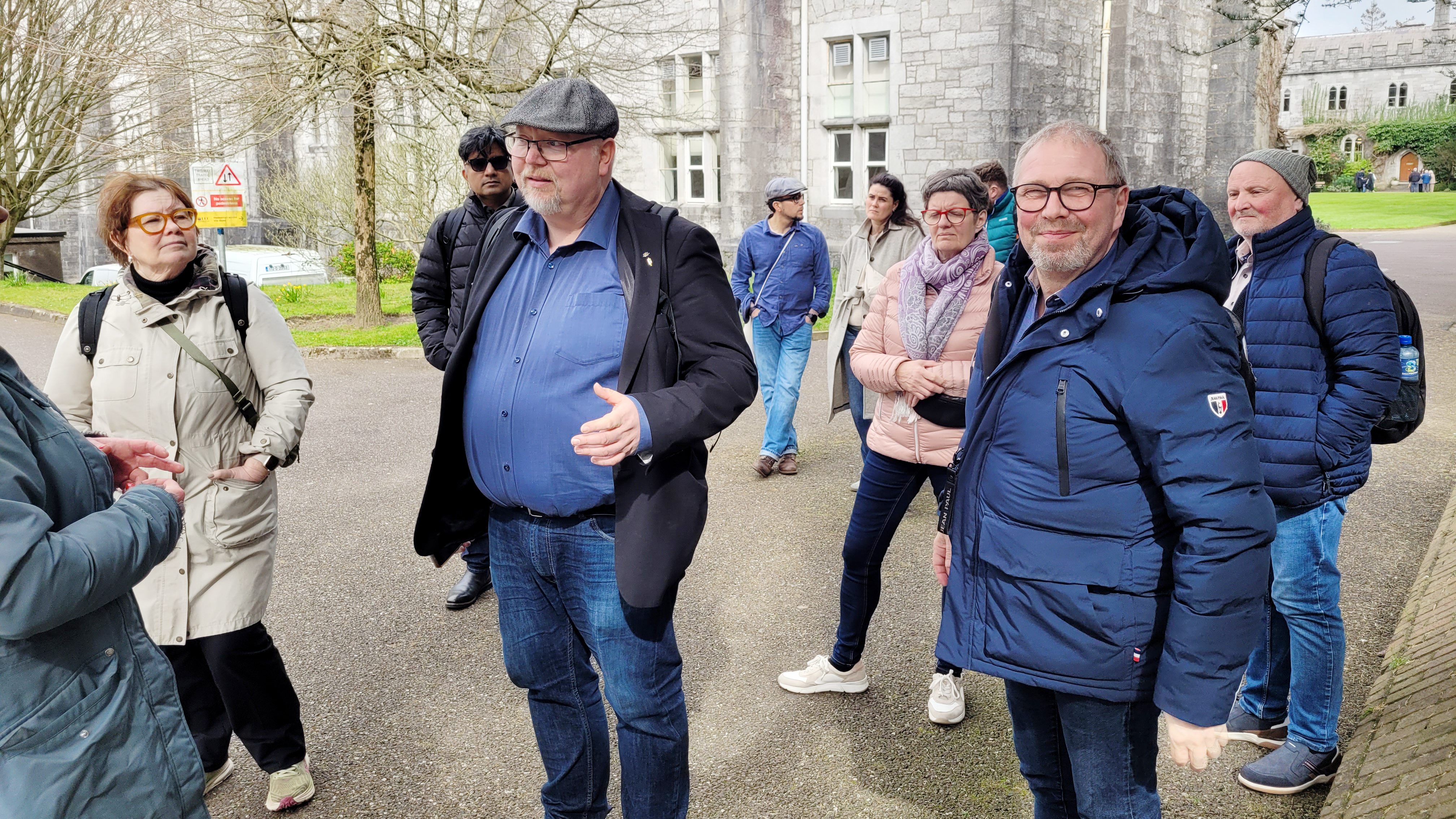From Pilots to Practice: How Northern Communities are Pioneering Energy Transitions
The Interreg Northern Periphery and Arctic Programme (NPA) recently marked its 25th anniversary, providing the Nordland Research Institute and its partners with a platform to transform pilot energy projects into real-world practice. This story is a recap of our presentation from the Conference: Connecting the Dots: 25 Years of Cooperation in the NPA

The Nordland Research Institute (with researcher Bjarne Lindeløv) has participated in the NPA since its inception. For example, early projects, such as Radwat (1999–2001), tested technological hubs in northern regions, and, building on that foundation, mid-term evaluations then guided the programme’s direction. In recent years, the institute has further contributed by assessing solar and wind power potential in Arctic conditions. Lindeløv thus had analysed regulatory and market frameworks for renewables in the North. Collectively, these efforts paved the way for more ambitious applied projects.
Setting the Stage
Elighthouse, initiated in 2016 and concluded in 2019, was co-financed by the Interreg NPA programme to foster collaboration between five northern European communities. The project focused on advancing energy efficiency and increasing the uptake of renewable energy in the Northern Periphery and Arctic regions.
Elighthouse targeted several key areas relevant to professionals: retrofitting public buildings, piloting smart energy solutions for infrastructure and housing, investigating waste-to-energy opportunities, and promoting energy efficiency measures in buildings and waste management. The project also emphasised domestic retrofitting and raising public awareness on the role individuals and households play.
Pilots in Action
The partnership deployed pilot projects across various regions of its partners. In Finland, new guidance programmes for builders enhanced construction processes, especially regarding ventilation, airtightness, and moisture management. In Sweden, Umeå’s municipal kitchens deployed monitoring devices to track and provide real-time feedback on energy use, demonstrating how incremental behaviour adjustments can translate into measurable energy savings.
In a Swedish pilot at Hedlunda Preschool, researcher Gireesh Nair showed that even high-standard buildings require ongoing attention. Although designed as a passive house, the building failed to meet heating targets due to excessive ventilation. Monitoring identified the issue, highlighting the need to fine-tune smart solutions, such as demand-controlled ventilation.
In Bodø, Norway, a centralised online energy management system was implemented, allowing real-time interventions, system optimisation, and identification of opportunities for retrofitting. Seventeen households partnered with Enova SF to adopt energy efficiency measures. Enova aims to contribute to meeting Norway’s climate commitments and to promote effective climate and energy transition measures. Lindeløv and Vangelsten at NRI found that although liquid-to-water heat pumps reduced grid use by over 40 per cent in some cases, the overall average reduction reached only 7.7 per cent, falling short of Enova’s 23 per cent target. The researcher concluded that households opted to use energy savings to improve comfort rather than reduce consumption, reinforcing the importance of pairing technology with behavioural change.
Hybes: Scaling Up for Decarbonisation
Elighthouse established municipalities as pioneers and showed how pilots serve as powerful learning arenas. Its successor, the Hybes project (2023–2026) with NRI as lead partner, builds on these lessons. Hybes shifts from building-level efficiency to district-wide energy flexibility. Pilots now combine solar, geothermal, and heat pump technologies with large-scale storage, and as Lindeløv comments, this creates knowledge for municipal planners in future.
A recent Hybes finding from Umeå University by Itai Danielski and Gireesh Nair shows how scaling can be more practical. Researchers developed "archetype-based calibration" for Urban Building Energy Modelling (UBEM). Instead of modelling each building, this method groups buildings into archetypes. They tested a simplified model (one archetype) and one with nine archetypes across a district of multi-residential buildings. Both models predicted annual energy use within 5% of actual consumption. The simplified model needed much less data. This suggests that districts can plan upgrades without perfect, detailed data.
Hybes is also working to involve stakeholders from the start. A key part is creating Living Labs or Decarbonisation Zones—real-world spaces for testing energy solutions in collaboration with local governments, households, and institutions. In these labs, everyday tools such as simplified dashboards and feedback systems help citizens track emissions and encourage change. These tools are more than gadgets; they make energy use visible, actionable, and optimisable locally.
Another Hybes insight: awareness raising and stakeholder engagement are not add-ons; they are central to the process. One HYBES news story from Cork, Ireland, “How Everyday Tools Are Helping Communities Cut Carbon Emissions,” demonstrates how modest, familiar tools—such as feedback screens, simple dashboards, and workshops—help people understand what to do. The push to involve young people through educational programmes ensures behavioural change and awareness happen both now and in the long term.
From Pilots to Practice
The progression from Elighthouse to Hybes shows how northern pilots become models for systemic energy change. True transformation depends on collaboration, real-world testing, and support for local adaptation—key ingredients for effective decarbonisation.
As the NPA looks to the future, these projects send a clear message: community-led, research-backed, and policy-supported solutions drive decarbonization. From kitchens to city districts, Northern lessons show the way forward.



